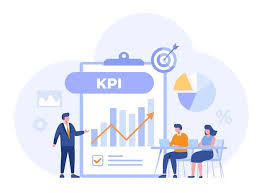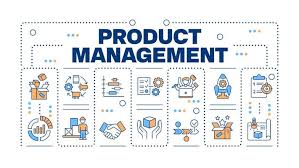What exactly does technical due diligence cover (infrastructure, code, licensing, documentation, etc.)?
Technical Due Diligence (TDD) isn't just a buzzword – it's the indispensable blueprint for success.
TDD is a comprehensive and independent evaluation, delving deep into the very heart of an organization's technological viability. Its core purpose? To unearth hidden risks, accurately assess true value, confirm scalability, and ensure the target's tech assets align perfectly with strategic objectives, paving the way for a smooth post-acquisition journey.
So, what precisely does this critical process scrutinize? Let's peel back the layers and examine the key technical domains that TDD champions diligently dissect.
The Core Pillars of Technical Due Diligence
At its heart, TDD provides an extensive evaluation of an entire organization, extending beyond mere IT systems. It arms investors, principals, and shareholders with the confidence needed to make sound investment decisions by identifying opportunities, planning strategies, forecasting results, and understanding inherent risks. While often initiated by the acquiring company or investor, a proactive seller can also undertake TDD (known as Vendor Due Diligence) to identify and rectify issues pre-emptively, streamlining the buyer's process and potentially securing a higher valuation.
The scope of TDD is broad, touching upon critical aspects like a company's products, software, IT infrastructure, intellectual property, product roadmap, services, practices, and even the IT staff. Let's break down these essential areas.
Deep Dive: Key Areas of Technical Due Diligence
1. Technology Infrastructure & Architecture This pillar forms the digital bedrock of any company. TDD rigorously examines:
• Hardware and Networks: Are servers, networking equipment, and storage solutions contemporary and sufficient for current and future operations?
• Cloud Solutions & Data Centers: This includes evaluating cloud service providers, hosting environments, and assessing operational redundancy.
• Architectural Design: TDD delves into the software system architecture (monolithic, microservices, serverless), how various components interact, data flow, and deployment processes. The goal is to highlight any bottlenecks, single points of failure, or outdated systems that could impact scalability, reliability, and maintainability.
• Backup & Disaster Recovery: Assessing the robustness of data backup strategies and disaster recovery plans is crucial for business continuity.
2. Software Systems & Codebase Quality Beyond just "lines of code," TDD evaluates the very fabric of the product. This includes:
• Code Quality & Standards: Scrutiny of coding standards, readability, modularity, reusability, and adherence to best practices. Poor quality code can significantly slow down future development and lead to performance issues.
• Technical Debt: A critical focus is on identifying and quantifying technical debt—the "interest" accumulated from unresolved issues, shortcuts, or outdated code that can drain resources, increase costs, and hinder innovation. Measuring and managing technical debt is vital for competitive advantage.
• Development Processes: Examination of methodologies (e.g., Agile, Scrum), deployment pipelines, release processes, error logging, and resolution procedures.
• Testing Practices: Assessing the efficiency of testing and quality assurance, including automated tests, unit, integration, and end-to-end test coverage. Automated code review tools are often used for efficient identification of issues.
3. Intellectual Property (IP) & Licensing In the digital age, IP is often the "crown jewels" of a company. TDD ensures their protection and proper use:
• Ownership & Protection: Verifying patents, trademarks, copyrights, and business names to confirm the company has exclusive rights and is not infringing on others.
• Third-Party & Open-Source Software: A detailed audit of all third-party and open-source components, their licenses, and compliance requirements is essential. Failure to comply with open-source license obligations (e.g., GNU GPL's requirement for derivatives to be under the same license) can lead to litigation, costly re-engineering, and reputational damage.
• Licensing Agreements: Reviewing existing software and IP licensing agreements, including royalty calculations, to ensure clarity and identify potential undervaluation or breaches.
4. Security & Data Privacy With cyber threats on the rise, security is paramount. TDD provides a crucial risk assessment:
• Cybersecurity Measures: Evaluating firewalls, encryption, intrusion detection systems, access controls, and incident response procedures.
• Vulnerability Assessment: Conducting security audits, penetration testing, and using Static Application Security Testing (SAST) and Software Composition Analysis (SCA) tools to identify vulnerabilities early in the development cycle.
• Data Protection & Compliance: Ensuring adherence to stringent data protection and privacy regulations like GDPR, CCPA, HIPAA, SOC 2, and ISO 27001. This includes reviewing historical privacy breaches and their handling.
5. Documentation & Knowledge Management While often overlooked, robust documentation is a direct reflection of organizational maturity and directly impacts maintenance and future development. TDD scrutinizes:
• Technical Documentation: Assessing the completeness, accuracy, clarity, and consistency of system architecture designs, test plans, product specifications, user manuals, and API documentation.
• Knowledge Transfer: Evaluating plans for training new hires and ensuring critical technical knowledge is not concentrated in a few individuals but effectively shared across teams.
6. Product Roadmap & Development Processes TDD assesses the future trajectory of the technology:
• Product Strategy & Roadmap: Examining alignment with investment and growth objectives, market trends, and competitive positioning.
• Development & Release Cycles: Assessing the maturity of DevOps and CI/CD practices, automation, and the efficiency of release processes.
• Innovation Potential: Gauging the company's resources and vision for future innovation.
7. Team Capabilities & Organizational Structure (People) Ultimately, technology is built and maintained by people. TDD considers:
• Team Skills & Expertise: Evaluating the technical team's proficiency, experience, and ability to support current systems and tackle future challenges.
• Organizational Structure: Reviewing the organizational chart, roles, responsibilities, and the distribution of technical skills to avoid over-reliance on a few key individuals.
• Morale & Turnover: High turnover rates can signal deeper issues affecting the technical team's stability and productivity.
8. Operational Processes & IT Financial Health This category delves into the day-to-day practicalities and costs associated with the target's IT landscape:
• Operational Efficiency: Reviewing the target's operating model, system monitoring, and support structures to uncover inefficiencies.
• IT Budget & Spending: Examining IT budgets, capital expenditure (Cap-Ex) versus operating expenses (Op-Ex), and software license agreements to identify cost optimization opportunities.
• Performance Metrics: Reviewing key performance indicators (KPIs) like system availability, response times for support requests, and critical bug fix turnaround times.
• Incident Management: Assessing the company's plans to contain and resolve system failures and security breaches.
The Final Verdict: Don't Skip the Diligence!
Technical Due Diligence is far more than a simple checklist; it's a strategic imperative that underpins successful M&A and investment decisions in the digital economy. It equips buyers and investors with the granular understanding needed to assess value accurately, negotiate effectively, and plan for seamless integration, minimizing costly surprises down the line.
In a world where every technological decision can make or break a business venture, rigorous TDD ensures that the technical assets align perfectly with strategic goals, setting a solid foundation for future growth and innovation. This comprehensive approach, often best executed with the unbiased and specialized expertise of external advisors, is the key to unlocking true potential and transforming a complex process into a streamlined operation for maximum ROI.



















